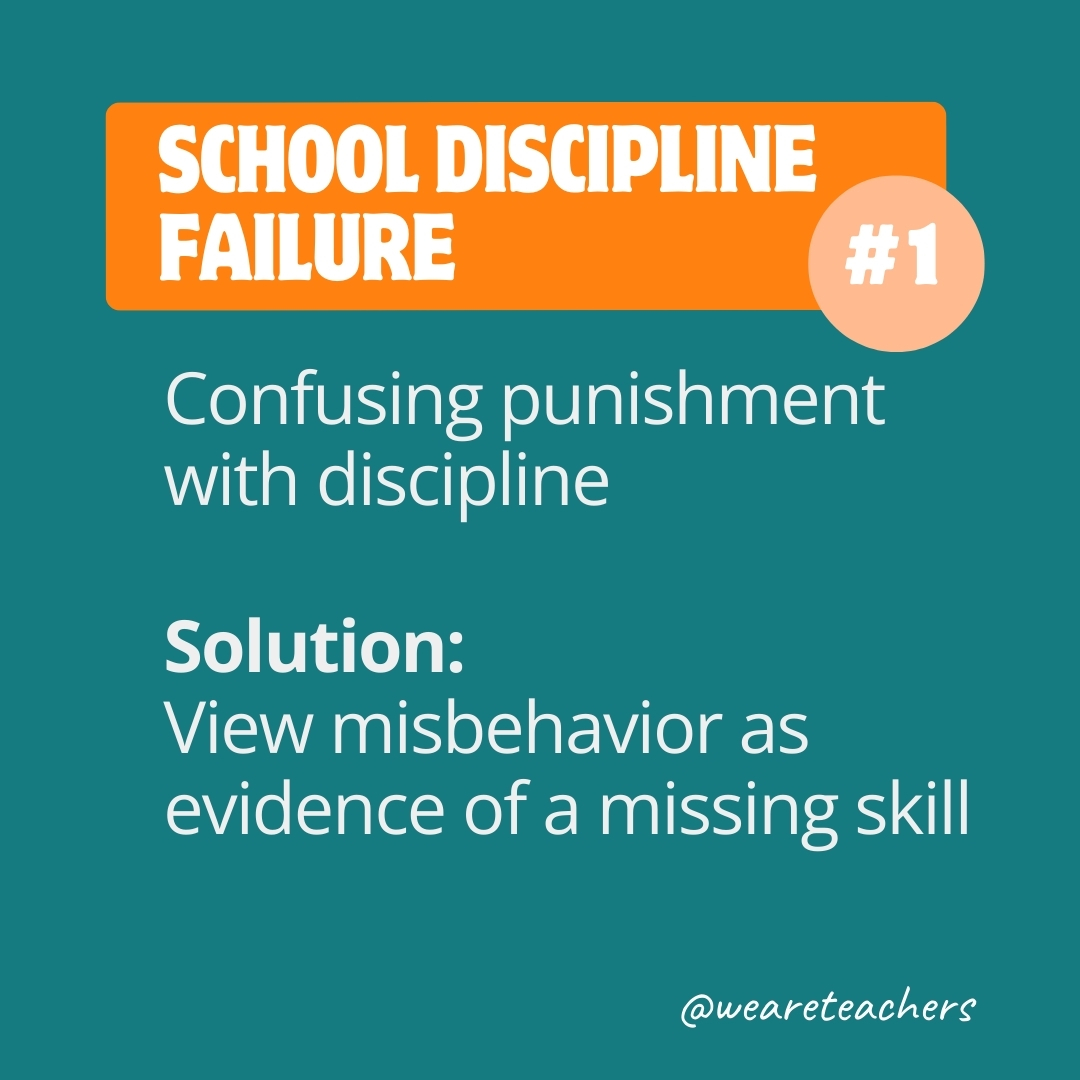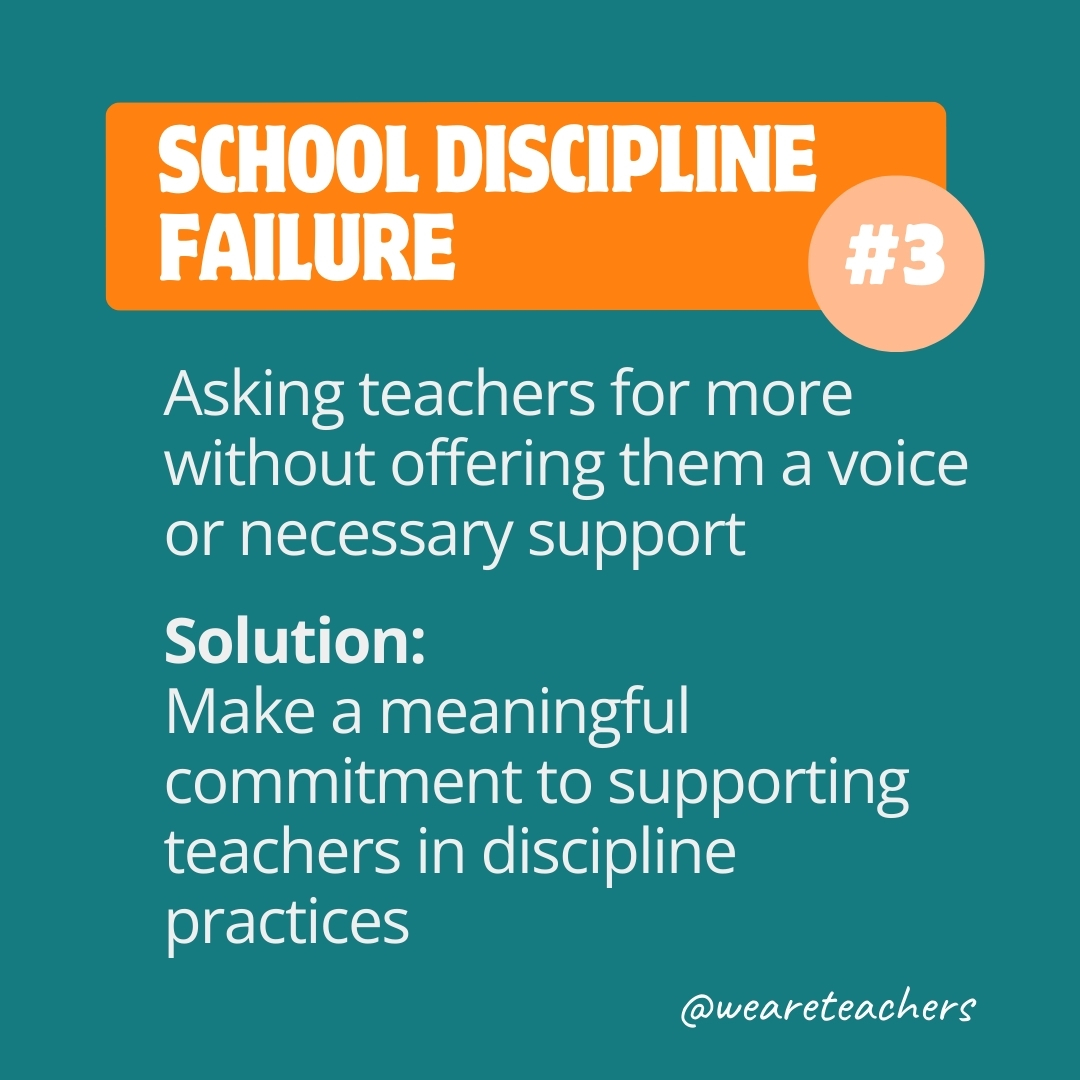
Discipline is a hot subject of debate in the world of education. Schools are constantly revamping their policies, trying to find ways to better serve all students. But this often feels like an exercise in futility, with more school discipline failures than successes. In fact, 84% of schools report that student behavior is worse now than before the COVID-19 pandemic, and overall, schools seem lost in this discipline shift.
That’s why programs like Conscious Discipline, with more than 25 years of recognized experience and excellence, offer help finding the right solutions. Conscious Discipline equips teachers and schools to integrate social-emotional learning, discipline, and self-regulation, allowing them to spend less time policing behavior and more time teaching vital life skills.
Take a closer look at three of the biggest school discipline failures, and explore ways to change the story with free resources from Conscious Discipline.

School Discipline Failure #1: Confusing punishment with discipline
Picture this: A student throws a handful of spaghetti at his friend during lunch out of anger, misses, and hits a teacher in the cafeteria. The lunchroom monitor writes up the incident, forcing the student to apologize in writing to the teacher. The following week, the student gets angry again, this time in the hallway, and rips some posters off the wall. They’re given a Saturday detention this time around, and the cycle continues.
Ultimately, we all know that punishments like this don’t change student behavior. If the incident was a one-off from a student who doesn’t normally behave like that, the punishment might make them think twice. But generally, these types of punitive measures just don’t work, as research frequently shows. Conscious Discipline stresses the need to reframe incidents like the example above, shifting the focus from punishment to the opportunity for learning it presents.
Misbehavior is often evidence of a missing skill. This can be caused by trauma or simply because the student hasn’t developed the necessary executive-functioning skills to behave appropriately in a given situation. Our job is to identify what our students need and provide them the education and support necessary to make different choices when placed in similar situations in the future.
This doesn’t invalidate the need for discipline itself, it just asks us to question our approach and purpose in that act. Discipline means teaching kids the importance of having and following a set of rules, and helping them understand the consequences of breaking them. And that’s where schools are failing.
Solution: View misbehavior as evidence of a missing skill
Let’s think about that spaghetti-throwing student again, and consider what it might reveal about them. A young person who lashes out when they’re feeling angry seems to be displaying a need for self-regulation skills. Without these crucial skills, no amount of punishment is going to stop them from acting out the next time they become overwhelmed by anger. By recognizing this and working with the student to develop this skill, we are truly addressing the underlying cause of the behavior we want to reduce and ultimately eliminate. Teaching the new skill becomes our primary focus.
When we consider consequences for the student’s action, we want to make sure they make sense, are fair, and do not cause any additional trauma. Maybe they could shadow a custodian for an afternoon so they can see how their choice to make a mess impacts someone else. It is important to remember that unless the student is receiving instruction on how they can respond differently, and more appropriately, when they feel that anger, no consequence is likely to help them choose a better response the next time their anger arises.
Learn more:

School Discipline Failure #2: Adopting grading and behavior policies that mask negative trends
No grade in the grade book below a 50. Unlimited time to turn in work. Unlimited retest opportunities. No official school consequences for behavior unless it’s violent. No consequences for failing or not attending summer school. Does any of this sound familiar?
Though policies like these can make sense when used sparingly on a case-by-case basis, they were never meant to be applied to every student across the board. But more and more schools have adopted these policies, which make it look like a school has student behavior and academics under control. Instead, it’s doing everyone a disservice. These policies lower the academic and behavioral standards for an entire population of a school, leaving teachers to deal with the fallout and students to wonder why they should bother turning in anything at all.
Solution: Believe all students are capable of meeting high standards
A Harvard Business Review study a few years back discovered something incredible: People don’t rise to the level of our stated expectations. They fulfill what we already believe about them.
In other words, when we automatically expect good things from students, they’re more likely to achieve them. As educators, we have to send a message that says we KNOW kids can meet high standards. When we demonstrate confidence in them, they’ll develop their own sense of self-confidence.
Be prepared to accommodate individual challenges as they arise, rather than assuming them as a default. This is where growth mindset really shines: encouraging students to remember that one mistake doesn’t mean failure. Show students we already believe in them, and they’ll hold themselves to higher standards automatically.
Learn more:

School Discipline Failure #3: Asking teachers for more without offering them a voice or necessary support
In recent years, there’s been pushback against expert opinions, including those of experienced teachers. It’s time for the pendulum to swing back to the middle, a place where teachers and other authority figures are trusted, but where the public also feels empowered to ask questions of them. A place where leaders trust teachers to help shape legislation, policy, and other decisions that shape schools. And where parents are neither the boss nor the customer who is always right, but a partner in education.
For decades, we have piled more and more work onto teachers without giving them any additional support. School-wide systems like PBIS and restorative justice are great in theory. But they are just frameworks without the practical “how-to’s” that teachers need in real disciplinary situations. Schools that demand this kind of buy-in and extra work without also creating time and space for their teachers to do that work effectively are out of touch.
And that’s a shame, because many of these innovative programs really do work when they’re used right. But doing it right means wholehearted buy-in and support from administration as well as teachers and staff, every day and every step of the way.
Solution: Make a meaningful commitment to supporting teachers in discipline practices
This often means a big cultural change, giving teachers a more equal seat at the table overall. It means freeing up time in teachers’ schedules for new programs, rather than asking them to squeeze in more professional development on top of everything else. Plus, it requires administrators to truly understand and support the chosen programs, not just pay them lip service. Principals, support staff, and other administrators have to be an active part of the process.
Bring teachers into the process when choosing school-wide programs for SEL and behavior management. Get their buy-in from the start, and give them the tools and support they need to make programs work. Set aside dedicated time in their regular schedules for professional development and training, and give them the daily support needed to make your chosen program work. Seek feedback often on how things are going, and be willing to make adjustments as needed.
Learn more:
School Discipline Resources From Conscious Discipline
Schools ensure students meet their potential when they offer them the opportunity to course-correct in a safe and low-risk way. We’re doing a disservice to their development and their personhood by acting like kids are too fragile for discipline or struggle of any kind.
If you’re ready to pursue real change in your classroom, school, or district, Conscious Discipline can help. Sign up for a free account to take advantage of 200+ resources like articles, printables, songs, videos, and more. Then, explore their site to learn more about the programs, books, and other resources they offer, including the classic book that started it all: Conscious Discipline by Dr. Becky Bailey.